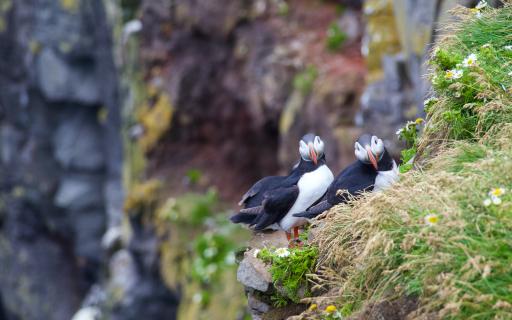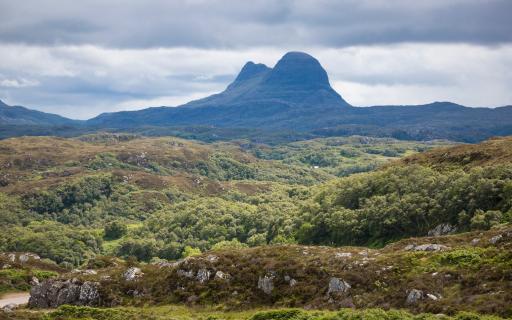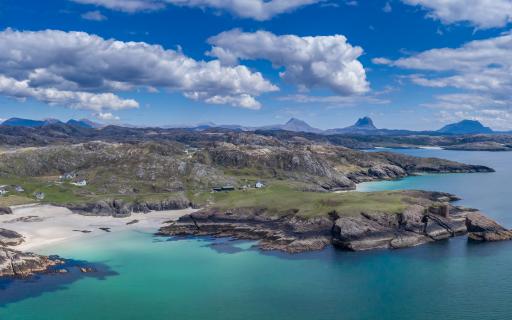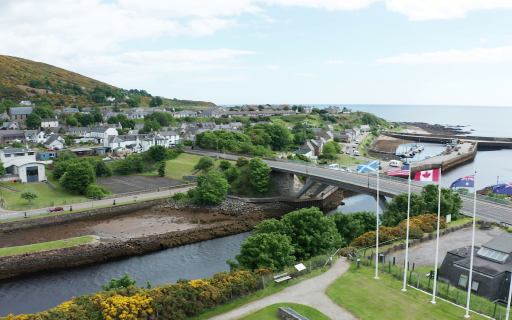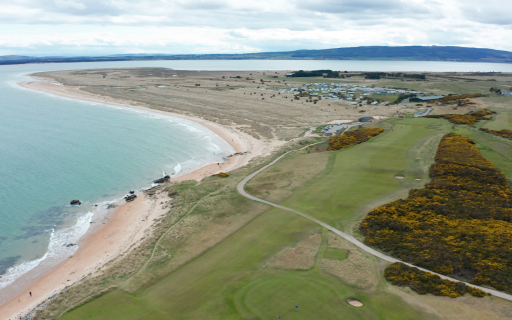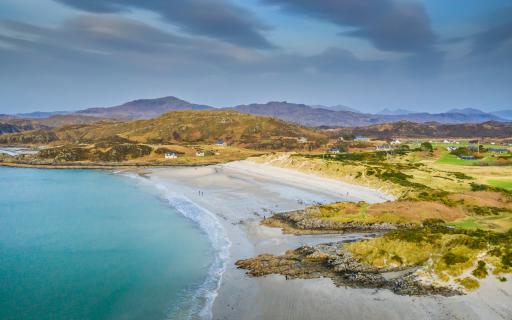
Moine Thrust - Rock of Ages
The Top Left Corner Stitchers came together from areas around Lairg, Assynt and Lochinver to stitch into their panel the history, heritage and landscape of this beautiful part of the Highlands.
This is their story.
'Some would say we live in a ‘remote area’. Whilst we do live far from main centres of population, this community does not feel in any way ‘remote’.
Community, shared history and connection are very important to people living here. Many folk still talk about past residents, and the links between past and present are still strong. However, this is a forward-looking community too.
Key to Assynt’s more recent history was the land buyout by the Assynt Crofters in 1993. This was the first community land buyout in Scotland and paved the way for a revolution in land ownership in the Highlands.
We wanted our panel to represent aspects of the area that are important to us. They reflect the richness of the landscape, flora and fauna, history and folklore. And, importantly, we also wanted to reflect aspects of living in the present day.'
 Rock of Ages Tapestry Panel
Rock of Ages Tapestry PanelImage provided by Top Left Corner Stitchers, Sutherland

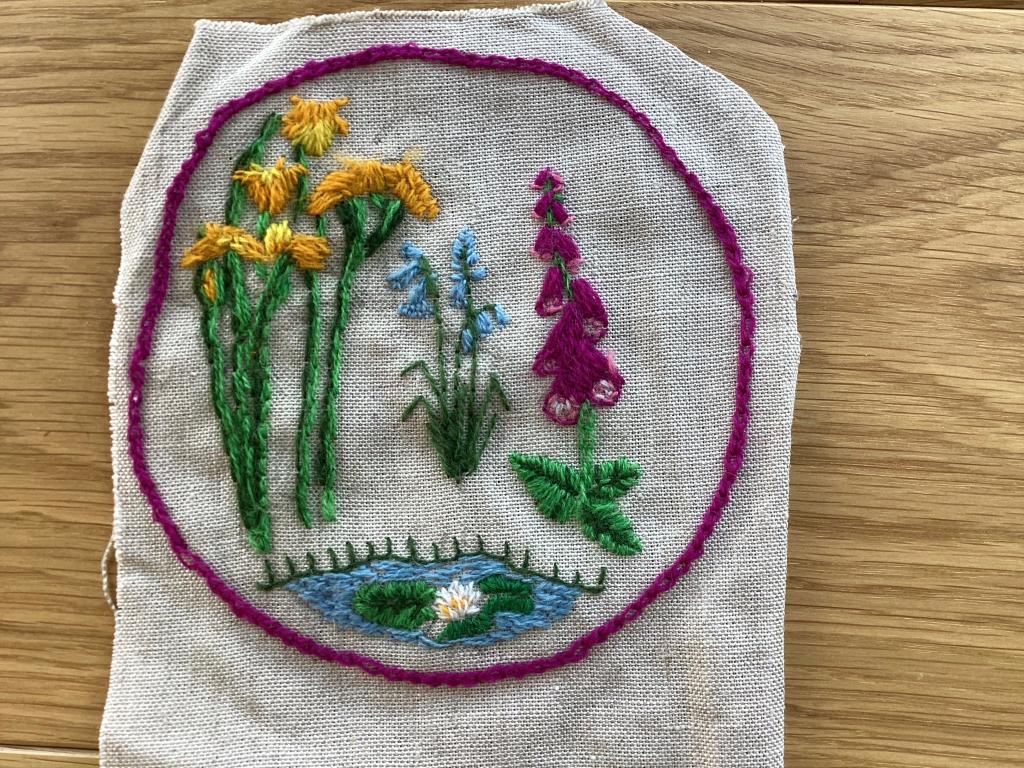

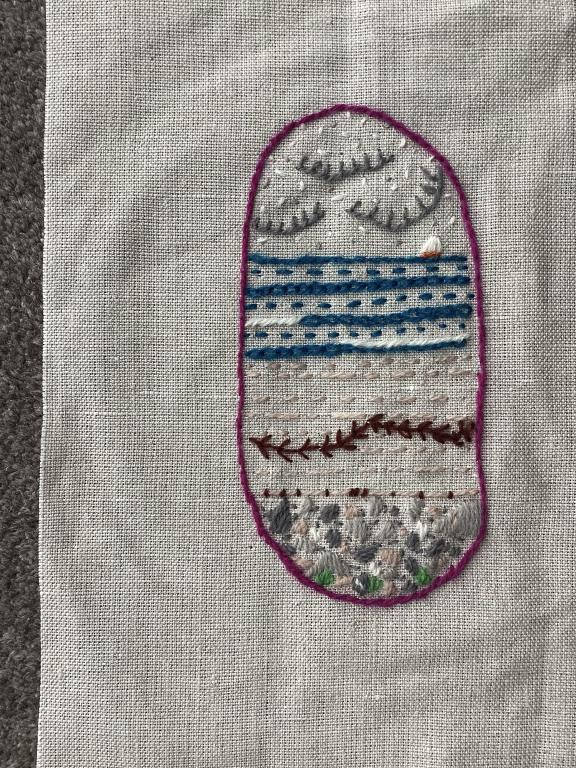

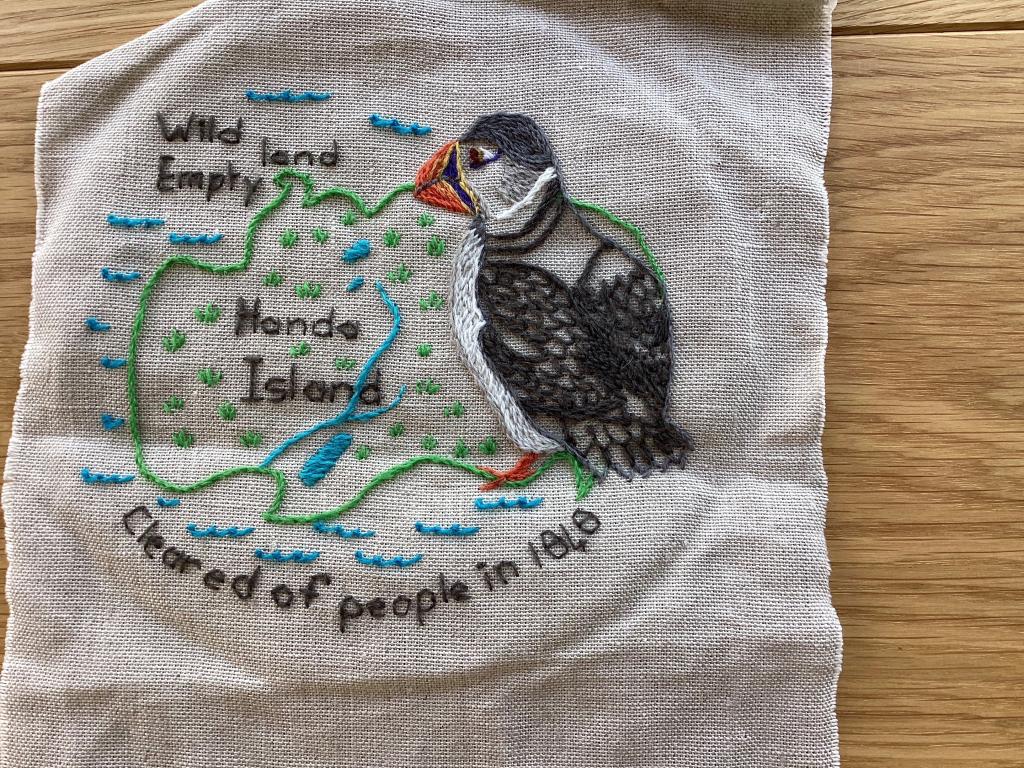

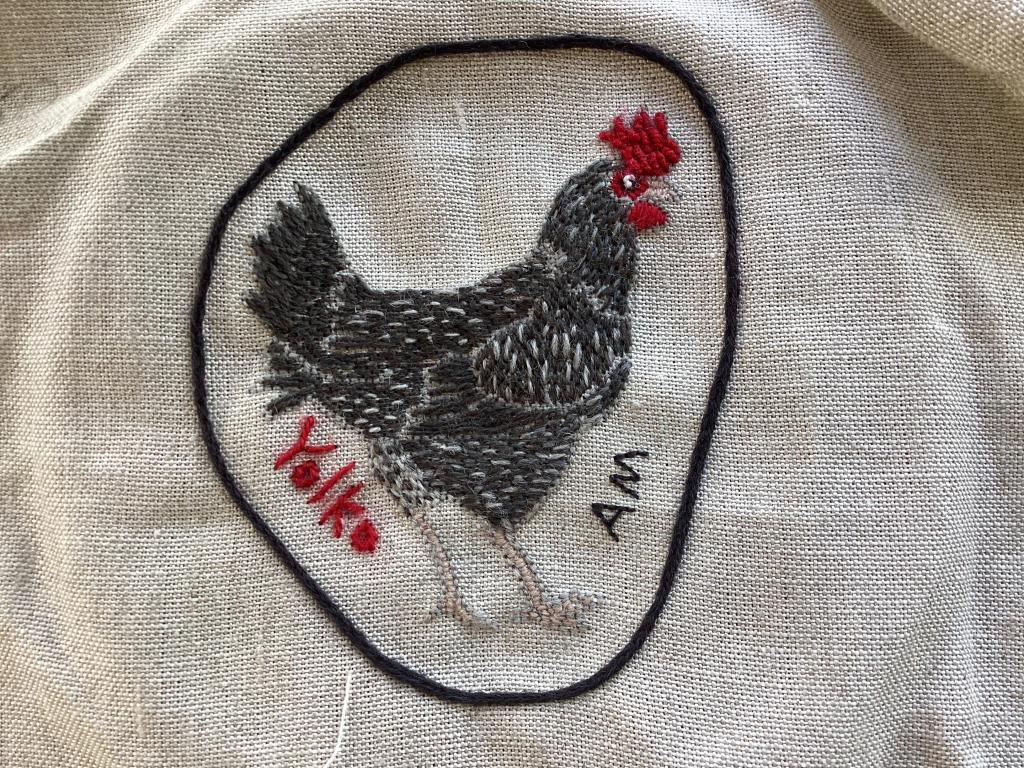



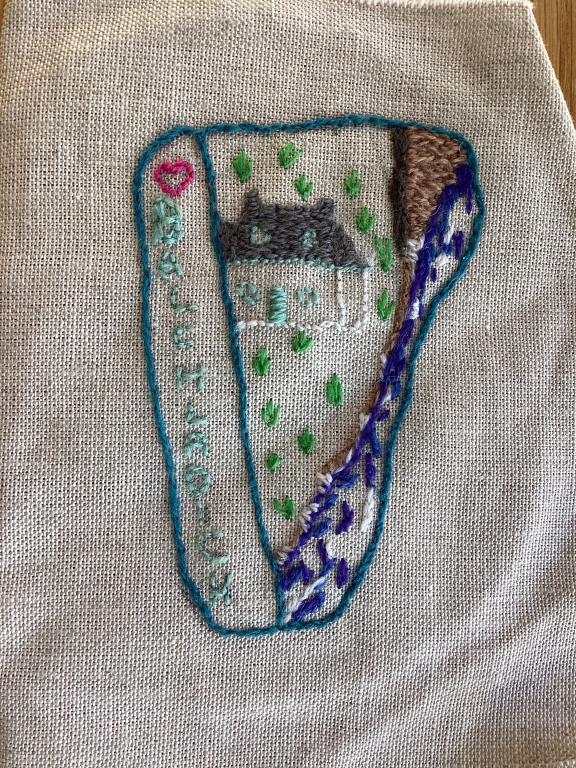
The panel depicts the 'rock of ages' representing a section of the geology of the area. This part of the North West Highlands is internationally recognised for its geology and place in the history of
science. Notably, it was whilst researching in the field at the end of the 19th century that Ben Peach & John Horne described many of the geological processes and structures that underpin the modern day understanding of the rocks below our feet.
Our area is situated within the UNESCO World Heritage Site, the North West Highland Geopark, and features some of the oldest rocks in Europe. The Highlands Controversy unfolded during the mid to late 19th century when geologists began to study the rocks of the North West Highlands. Initial surveys carried out by the official Geological Survey led by Murchison and Geikie began to be questioned by ‘amateur’ geologists who had discovered a number inconsistencies where rocks appeared out of sequence in the rock strata. For example, older rocks seemed to overlay younger rocks in some areas, whereas normally one might expect them to be underneath. The disagreements between the amateurs and the Geological Survey (the Highlands Controversy) finally came to a head in the 1880’s and resulted in the Geological Survey sending up a dedicated team to resolve the issue once and for all. Ben Peach & John Horne’s findings validated the work of the amateurs and led to the discovery of thrust faults, of which the Moine Thrust is perhaps the most important.
Our unique landscape frames our panel where we have stitched into our journey stones stories of natural beauty at the Wailing Widow Waterfall and Sandwood Bay, the devastating story of the Clearances and the World Wars which had a detrimental effect on the population and families of Sutherland, stories of our Gaelic heritage, fishing, crofting and so much more.
EXPLORE THE TEXTILES OF THE TAPESTRY WITH LOCAL MAKER HELEN LOCKHART OF RIPPLES CRAFTS
Discover more stories from our panel
 Hard at work, stitchers added personal touches to the panel.
Hard at work, stitchers added personal touches to the panel.Image provided by Charlie Leeson
WITH THANKS TO THE TOP LEFT CORNER STITCHERS
This panel was stitched by Charlie, Helen, Jean, Alison, Angela, Catherine, Nancy, Morag and Aileen who gave their time, skill and energy to completing a fantastic artwork for their area.
If you would like to see the panel up close and admire the detail of their work, please look out for the panel at an exhibition near you soon. To find out more, follow Inverness Castle Experience on Facebook for all the latest updates on the Tapestry of the Highlands and Islands and the new visitor experience in Inverness, open 2025.
EXPLORE MORE STITCHERS STORIES BELOW
Swipe left for more

